The role of lifestyle and nutrition in diabetes
Weight loss diets and physical exercise programs are effective intensive lifestyle interventions (ILI) in obesity and in type 2 diabetes (T2D). As shown in figure 1, the clinical guidance of all major societies, such as Diabetes Canada, the American Diabetes Association, Obesity Canada, and the European Society of Cardiology, emphasize that lifestyle and nutrition are the cornerstone of managing diabetes.1-6
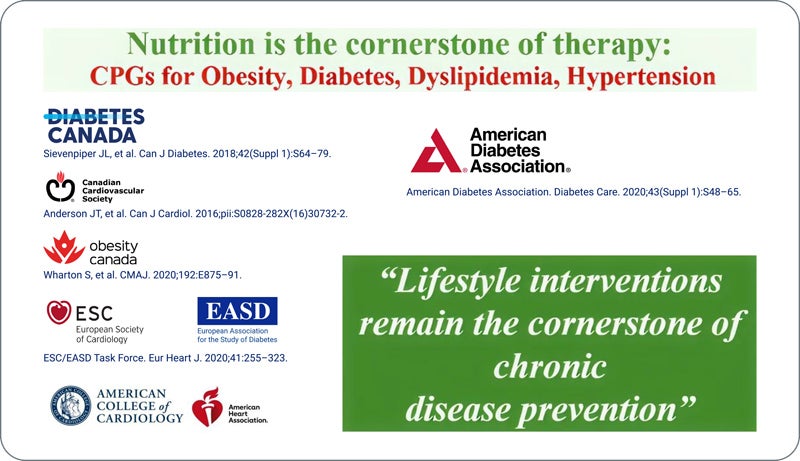
Diabetes Nutrition Education
How does diabetes education alone compare to ILI in T2D patient outcomes? At present, two landmark studies, the Look AHEAD study and the Why WAIT program, provide valuable insights on how ILI and diabetes education can impact sustained weight loss, glycemic control, and better cardiovascular outcomes in T2D.7-9 In this article we shall find out how to establish lifestyle interventions in a clinical practice setting based on the results of the two key studies.
Study Design
The Look AHEAD (Action for Health in Diabetes) Study Design
This study assessed ILI compared to diabetes support and education (DSE) in 5,145 overweight and obese adults with T2D and a BMI≥25 kg/m² (≥27 kg/m² for those on insulin). Participants were randomly assigned to the ILI or DSE group. ILI focused on caloric restriction (1,200–1,800 kcal/day), meal replacements, 175 minutes of weekly exercise, and behavioral strategies, with frequent individual and group sessions for support. In contrast, DSE provided only three annual group education sessions without behavioral strategies or individualized coaching.7,8
The Why WAIT (Weight Achievement and Intensive Treatment) Program Design
This program included a 12-week multidisciplinary ILI in 590 adults with type 1 or 2 diabetes and a BMI between 30 and 45 kg/m². The program focused on group education sessions for guidance on lifestyle changes, individualized diet programs based on caloric intake reduction and exercise. Cognitive-behavioral changes, which included psychological support, were also an integral part.9
Key Findings of LOOK AHEAD & Why WAIT
The results of these trials measure the clinical impact of structured weight loss diets and physical exercise programs in bringing patients closer to their goal of diabetes recovery i.e. sustained reductions in hemoglobin A1c (A1C).
WEIGHT LOSS
4-Year Look AHEAD Study:
As illustrated in figure 2, ILI participants maintained an average 6.2% weight loss in year 4, compared to 0.9% in the DSE group7.
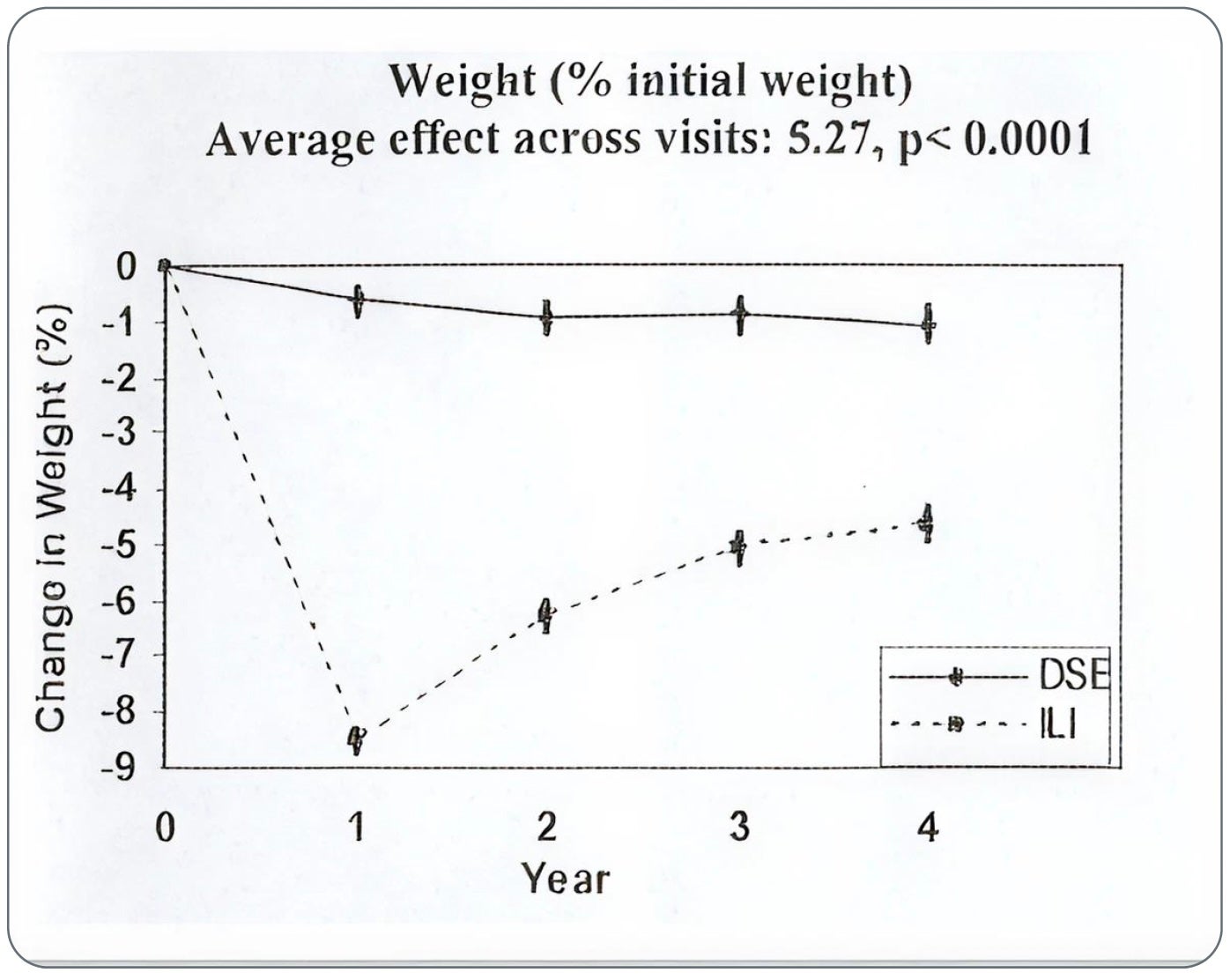
8-Year Look AHEAD Study:
Weight loss stabilized at 4.7% in the ILI group versus 2.1% in the DSE group. 50.3% of ILI participants achieved at least 5% weight loss in year 8, compared to 35.7% of DSE participants. 26.9% of ILI participants maintained a 10% weight loss, versus 17.2% in the DSE group.8
The Why WAIT Study:
Participants achieved an average weight reduction of 7.9% over 12 weeks. This study showed similar weight loss to Look AHEAD in a shorter duration. Figure 3 illustrates changes in body weight after 12 weeks of ILI in relation to baseline A1C:9
As shown in figure 3, participants in the Why WAIT program were stratified into three groups based on their baseline A1C levels:9
- Group A: A1C ≥9%
- Group B: A1C 8% to <9%
- Group C: A1C 6.5% to <8%
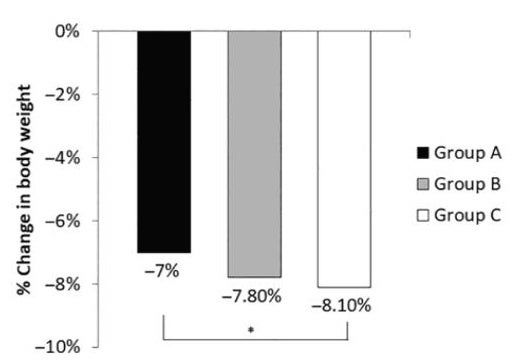
GLYCEMIC CONTROL
4-Year Look AHEAD Study:
As shown in figure 4, ILI participants had a greater reduction in A1C (-0.36%) compared to DSE (0.09%).7
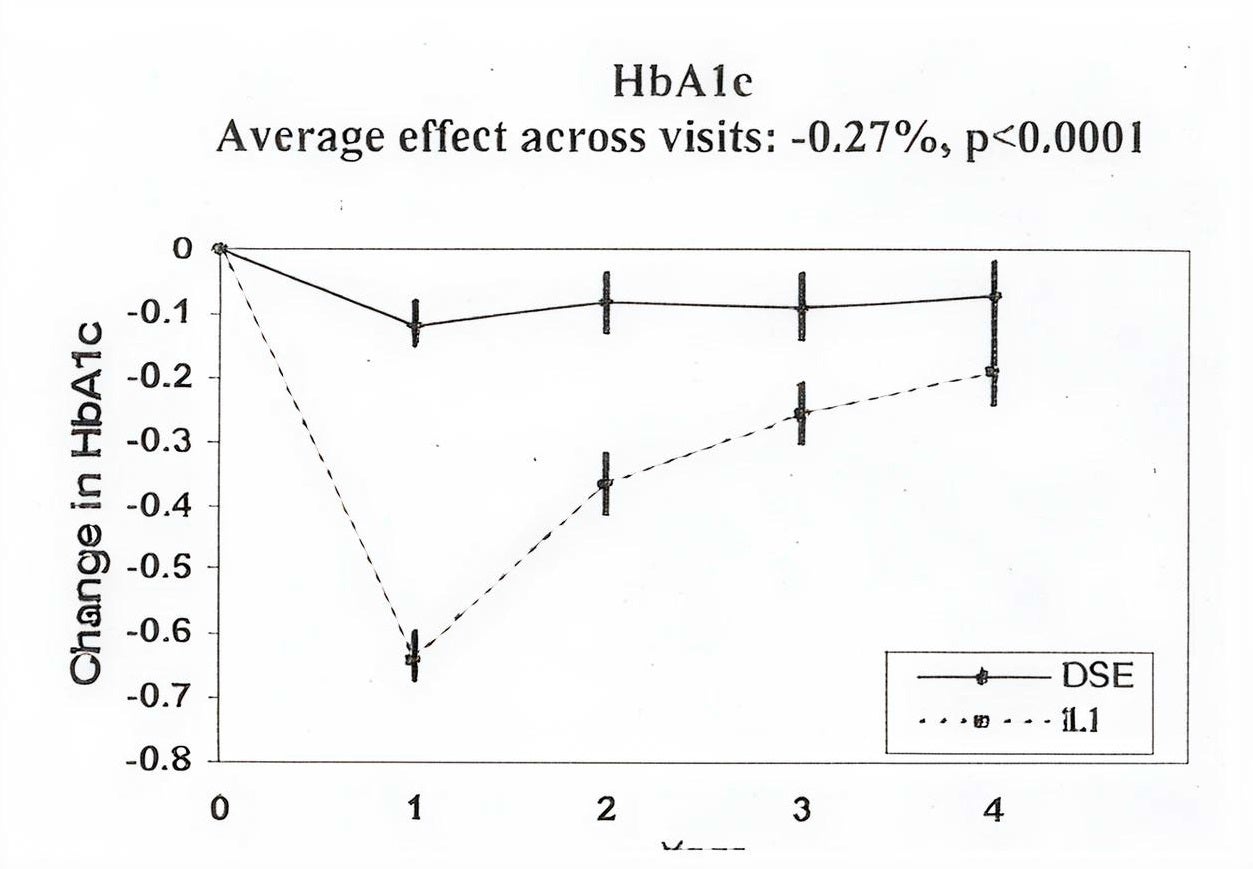
8-Year Look AHEAD Study:
Reductions in A1C remained significant.8
The Why WAIT Study:
The study showed up to 2.5% decrease in A1C, with greater improvements in those with higher baseline A1C. Figure 5 shows changes in A1C after 12 weeks of ILI in relation to baseline A1C:9
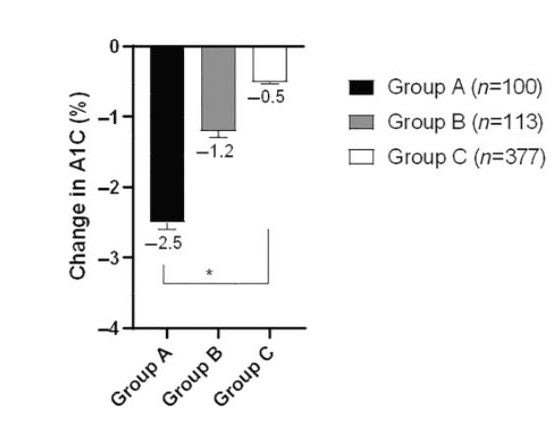
- Group A (A1C ≥ 9%): 2.5% reduction.
- Group B (A1C 8–<9%): 1.2% reduction.
- Group C (A1C ≥ 6.5–<8%): 0.5% reduction.9
CARDIOVASCULAR AND METABOLIC BENEFITS
4-Year Look AHEAD Study:
ILI participants experienced greater improvements in systolic blood pressure (-5.3 mmHg), HDL-C (+3.7 mg/dl), and triglycerides (-25.6 mg/dl) compared to DSE.7 Figure 6 shows the changes in HDL cholesterol:

8-Year Look AHEAD Study:
Improvements persisted with continued lifestyle support.8
The Why WAIT Study:
The study showed significant reductions in total cholesterol, triglycerides, and blood pressure, particularly in participants with higher baseline A1C.9
SUSTAINED BEHAVIORAL CHANGES
In the Look AHEAD study, participants in the ILI group reported greater adherence to weight-control behaviors, including:
- Increased physical activity (over 200 minutes per week of moderate-intensity exercise).
- Decreased caloric and fat intake with structured meal plans.
- Frequent self-monitoring of body weight (daily or weekly).7,8
Those who sustained a ≥10% weight loss at year 8 exhibited higher engagement in these behaviors compared to those who regained weight.8
What This Means for Your Patients
When patients ask, “Can diabetes be cured with exercise?”, physicians can reinforce the importance of evidence-based structured lifestyle interventions that entail both diabetes weight loss diet and diabetes exercise. The outcomes of the Look AHEAD and Why Wait studies demonstrate that ILIs can significantly improve diabetes patients’ metabolic health.9
Learn more about Using a Low Carb Diet to Control Type 2 Diabetes.
Access HereReferences:
- Sievenpiper JL, et al. Can J Diabetes. 2018;42(Suppl 1):S64–79.
- Anderson JT, et al. Can J Cardiol. 2016;pii:S0828-282X(16)30732-2.
- Wharton S, et al. CMAJ. 2020;192:E875–91.
- Grundy SM. Circulation. 2019;139:e1082–143.
- American Diabetes Association. Diabetes Care. 2020;43(Suppl 1):S48–65.
- ESC/EASD Task Force. Eur Heart J. 2020;41:255–323.
- Look AHEAD Research Group, Wing RR. Arch Intern Med. 2010;170:1566–75.
- Look AHEAD Research Group. Obesity (Silver Spring). 2014;22:5–13.
- Eldib A, et al. J Diabetes. 2023;15:532–8.
How does diabetes nutrition education with intensive lifestyle interventions impact diabetes patient outcomes in the realworld setting? Strong evidence now supports intensive lifestyle interventions that include a weight loss diet and exercise for diabetes. Learn more about The Look AHEAD study (Action for Health in Diabetes) and Why WAIT program (Weight Achievement and Intensive Treatment) results that demonstrated the efficacy of structured lifestyle interventions in managing diabetes.
